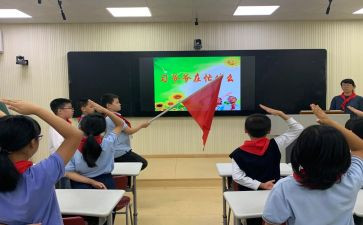中国的茶文化的演讲稿7篇
只有优秀的演讲稿才能吸引更多的听众,只有理清自己的思路才能写出优秀的演讲稿,85报告网小编今天就为您带来了中国的茶文化的演讲稿7篇,相信一定会对你有所帮助。

中国的茶文化的演讲稿篇1
the practice of drinking and serving tea has been part of china's cultural identity for centuries. china used to be the world's sole provider of tea. today, tea is the world's most widely consumed beverage after water, and famous chinese teas are still highly prized.
tea experts estimate that top-quality longjing will sell for 40,000 to 50,000 yuan per 500 grams this year, about 25 percent higher than last year. the price of common longjing will be around 4,000 yuan per 500 grams this year.
though quality tea is highly pursued at home, it seems that it has not secured a strong position in the global market.
li shiwei is the board chairman of tianfu group, a flagship tea enterprise based in fujian province, a major production region of oolong tea in china. he says a major problem for today's private tea enterprises is that they do not have enough money to operate on a large scale, let alone undertake promotions overseas.
"most of china's tea enterprises are non-state-owned with lack of funding being their weakest point. we are glad to see that minsheng bank is now offering a special loan program for tea enterprises. we hope more banks in china will give us more support in terms of financing."
li jiaxun, board chairman of zhejiang tea group, china's largest exporter of green tea, says a lack of widely recognized brand names is holding chinese tea exports back and squeezing the industry's profit margin.
li cites his own company as an example. the group mainly sells tea as a raw material rather than a branded product. as a result, its profit margin is only about 5 percent, and sometimes even lower.
the tea expert adds that chinese companies should also adapt to the needs of western customers, who might prefer black tea to green, and teabags to loose-leaf teas.
wen zhongliang, deputy director of the foreign trade department under the ministry of commerce, says it is an urgent task for chinese tea producers and sellers to build up the image of chinese tea abroad to boost tea exports.
"in addition to ensuring the high quality of chinese tea, tea enterprises in the country should promote the image of chinese tea together. it could be something of an effort to explain the cultural significance and health benefits of tea to foreigners, but once they realize that, they will find it fascinating."
the trade official suggests that existing networks such as the confucius institutes be used to spread china's tea culture around the world.
for cri, this is su yi.
中国的茶文化的演讲稿篇2
尊敬的各位领导、老师,亲爱的同学们,大家好!我是来自***。今天,我要演讲的主题是:弘中化传统文化,展名校学子风采。
浩瀚苍穹,蔚蓝天空,孕育了华夏五千年古老璀璨的历史与文明。“路漫漫其修远矣,吾将上下而求索”,屈原追求真理的科学精神激励着多少中华儿女立志成才,报效祖国。“富贵不能淫,贫贱不能移,威武不能屈”。孟子的教诲激励和成就了多少中华伟丈夫,民族大英雄。还有岳飞精忠报国的故事,林则徐虎门销烟的壮举,孙中山“天下为公”的胸怀,周恩来“为中华之崛起而读书”的信念,都让我们回想起中华民族一段又一段荡气回肠的历史。从古代的四大发明到如今的“神八”飞天,中国人演绎了多少了不起的神话!
有诗云:
梁启超先生早就说过:少年富则国富,少年强则国强。作为祖国未来接班人的我们,肩上的责任重大。因而加强文化素质教育,培养人文精神和科学精神,是青年全面发展的需要。而中华传统文化有着自强不息、厚德载物的优良传统,它以其强大的生命力培育了一代又一代的英才,为世界的发展做出了宝贵的贡献。因此我们有必要继承和发扬中国传统文化,让其指引着我们大学生前进的方向。那么作为大学生应该如何最大限度地继承和发扬传统文化呢?我们孝敬父母,用一杯淡淡清茶,一句贴心的问候,传承着中华民族的传统美德;我们尊敬师长,文明礼貌,处处体现着我们礼仪之邦的风范;我们努力学习,“敬业乐群、臻于至善”,不断把自己培养成为具有“信敏廉毅”素质的创业型人才。虽然我们现在能做的只是一些简简单单的平凡之事,但是我坚信,润物细无声,终有一天,中华民族的传统文化一定会深入人心。
我们是华夏儿女,炎黄子孙,是中华民族的新一代。黄河在我们的血脉中流淌,长城让我们永远刚强,“神舟”载人飞船使我们的天地无限宽广。传承了五千年的民族文化,正等待我们去发扬光大。
“俱往矣,数风流人物,还看今朝。”未来属于我们,世界属于我们,让我们在中华民族伟大
精神的熏陶下,刻苦学习,顽强拼搏,时刻准备着为中华民族的伟大复兴而努力奋斗!我的演讲完毕,谢谢大家!
孔子曰:“人能弘道,非道宏人。”曾子说:“士不可以弘毅,任重而道远。”然而,在这所谓的道义背后,在一桩桩英雄事迹之中,始终有一个千年不变的精神内容存在,这便是—民族精神。
民族精神是一个在民族适应环境,改造世界,形成自己特有语言,习俗和人文传统的长期发展历程中,表现出来富有生命力的优秀思想,高尚品格和坚定志向。民族精神是一个民族赖以生存和发展的精神支撑。
在五千多年的发展中,中华民族形成了以爱国主义为核心的团结统一、爱好和平、勤劳勇敢、自强不息的伟大民族精神,先有孟子的“养浩然之气”,“富贵不能淫,贫贱不能移,威武不能屈”,范仲淹的“先天下之忧而忧,后天下之乐而乐”,后有井冈山精神、长征精神、延安精神、抗洪精神,等等一切为祖国,为人民勇往直前,艰苦奋斗,无私奉献的精神永远值得我们去学习。而在实现中华民族伟大复兴的征途上,继承和发扬优秀的民族精神,无疑更具有现实意义。
十六大报告把弘扬和培育民族精神作为文化建设的一个重要任务加以强调是对民族精神的发展,也是对文化建设理论的深化。培育民族精神应该从大小环境做起,大小年龄进行普及教育。大的环境,国家应该倡导,鼓励这种精神,使国民具备这种精神,并使其变为热爱祖国,建设祖国的动力。而从小的方面来说,应该在各类教育中渗透教育弘扬民族精神,大力发展教育从而提高全民族的文化教养。
当前,培育和弘扬民族精神,首先要培育与弘扬解放思想、实事求是、与时俱进、开拓创新、知难而进、艰苦奋斗、自强不息、清正廉洁、永不自满,乐于奉献等的'民族精神,不落于时代而不断发展;不囿于陈规而勇于创新;不敢于骄傲而奋发向上,为全面建设小康社会,为振兴中华的民族精神。今天的伟大变革和新的伟大实践,正是孕育新民族精神的最佳时期,我们要抓住机遇,反复提炼,不断总结,为民族精神的宝库增光添彩,这既是民族精神发展的攻坚战,又是民族精神前进的光辉点。
仰望中华世纪的圣火我们感到中华民族正闪耀着我们民族特有的坚忍不拔,不畏艰难的伟大精神。而且,正是这种不屈的民族精神,使古老的中国从落魄中重新崛起,并再次屹立于世界民族之林。作为祖国后代的我们,所要做的是同先辈们一样把个人的命运同祖国的命运紧密联系起来,真正地做到:弘扬民族精神,立志报效祖国。这不但是每个中华儿女实现自己人生价值根本途径,更是祖国对我们的要求。
让我们一起为中华传统文化这颗长寿树浇水、施肥吧!
中国的茶文化的演讲稿篇3
the chinese people, in their drinking of tea, place much significance on the act of "savoring." "savoring tea" is not only a way to discern good tea from mediocre tea, but also how people take delight in their reverie and in tea-drinking itself. snatching a bit of leisure from a busy schedule, making a kettle of strong tea, securing a serene space, and serving and drinking tea by yourself can help banish fatigue and frustration, improve your thinking ability and inspire you with enthusiasm.
you may also imbibe it slowly in small sips to appreciate the subtle allure of tea-drinking, until your spirits soar up and up into a sublime aesthetic realm. buildings, gardens, ornaments and tea sets are the elements that form the ambience for savoring tea. a tranquil, refreshing, comfortable and neat locale is certainly desirable for drinking tea. chinese gardens are well known in the world and beautiful chinese landscapes are too numerous to count. teahouses tucked away in gardens and nestled beside the natural beauty of mountains and rivers are enchanting places of repose for people to rest and recreate themselves.
china is a country with a time-honored civilization and a land of ceremony and decorum. whenever guests visit, it is necessary to make and serve tea to them. before serving tea, you may ask them for their preferences as to what kind of tea they fancy and serve them the tea in the most appropriate teacups. in the course of serving tea, the host should take careful note of how much water is remaining in the cups and in the kettle. usually, if the tea is made in a teacup, boiling water should be added after half of the cup has been consumed; and thus the cup is kept filled so that the tea retains the same bouquet and remains pleasantly warm throughout the entire course of tea-drinking. snacks, sweets and other dishes may be served at tea time to complement the fragrance of the tea and to allay one's hunger.
中国的茶文化的演讲稿篇4
ladies and gentlemen:
itsquo;s my honor to stand here and make a speech. my topic is chinese tea culture.
do you know the name of the three most famous drinks in the world? they are tea , coffee and cocoa. china is the homeland of tea which has become the national drink. in other words, tea is basically spread out from china. referring to chinese tea culture, it has several thousand years of history and can be traced back to the ancient times. then it was flourished in the tang dynasty and the song dynasty.
at first, our ancients found tea make them excited, but they thought that drinking more would be destructive to the morals. as time went by, tea became popular among likeminded people, confucianism, taoism, buddhism and cultivation culture. until tang dynasty, tea culture began taking shape. when it came to song dynasty, tea culture became thriving. when people migrated, they would offer tea. when people engaged, they would send tea. when people got married, they would settle tea. tea became an important part in their daily life.
in china, the main varieties of tea are green tea, black tea, oolong tea, scented tea, white tea, yellow tea and dark tea. in the early days, the chinese boiled their tea leaves with water and other ingredients such as salt and ginger; later they ground the dried leaves to a powder and whipped them up with hot water. it was not until that ming dynasty that it became common practice to infuse the loose tea leaves in hot water in teapots, and then to pour the infused liquid into bowls to drink. nowadays, we make different tea in different particular ways. over the centuries, china developed an extraordinary tea culture, comparable with the wine culture of the west.
tea not only has a good flavor but also benefit to our body, so it is loved by many people home and abroad. different kinds of tea have different function which makes a contribution to our health. for example, the national drink of china-green tea, can dispel the effects of alcohol, clear away summer-heat, refresh yourself and whiten your skin. the second largest kind of tea-black tea, can warm your stomach, be good for your heart and make your bones stronger. dark tea can refresh you in the morning, reduce your blood press and help lose weight. oolong tea is good for your body building and dieting. in all, tea have great medicinal value, anti-cancer, lowering blood pressure, improving eyesight and restraining disease, reducing stress and so on.
tea culture and its development reflect not only diet culture, but also chinese spiritual features.
china is a country with a time-honored civilization and a land of ceremony and decorum. whenever guests visit, it is necessary to make and serve tea to them. before serving tea, you may ask them for their preferences as to what kind of tea they fancy and serve them the tea in the most appropriate teacups. in the course of serving tea, the host should take careful note of how much water is remaining in the cups and in the kettle. usually, if the tea is made in a teacup, boiling water should be added after half of the cup has been consumed; and thus the cup is kept filled so that the tea retains the same bouquet and remains pleasantly warm.
tea culture plays an indispensable role in promoting the international cultural exchange between china and other countries, enriching chinese cultural life and promoting chinese spiritual civilization construction. in conclusion, tea culture is one of the essences of chinese culture in the history. the spirit of tea permeates the court and society, into the chinese poetry, painting, calligraphy, religion, medicine. for thousands of years china has not only accumulated a great deal about tea cultivation, production of material culture, but also accumulated rich spirit of the tea culture, which is unique to china's tea culture.
thank you!
中国的茶文化的演讲稿篇5
老师们,同学们:
下午好。
今天我为大家演讲中国传统文化。中华传统文化应包括:古文、诗、词、曲、赋、民族音乐、民族戏剧、曲艺、国画、书法、对联、灯谜、射覆、酒令、歇后语、成语等;传统节日(均按农历)有:正月初一春节(农历新年)、正月十五元宵节、四月五日清明节、五月五日端午
节、七月七七夕节、八月十五中秋节、腊月三十除夕以及各种民俗等;包括传统历法在内的中国古代自然科学以及生活在中华民族大家庭中的各地区、各少数民族的传统文化也是中华传统文化的组成部分。
中国文化主要可以归纳为三种:1。宗法文化2。农业文化3。血缘文化。
这三种文化构成了中国传统文化的主流。并且随着历史的演变它们之间相互渗透作用越来越紧密。例如:在封建社会的大家庭里面,血缘关系十分重要,特别强调辈分和地位的等级差距,因此十分重视家族家规,它们在一定程度上甚至比国家的一些制度更具有凝聚力和威信,在鲁迅先生的小说里我们常常可以看见宗法文化对封建统治和人们思想产生的影响;我国自古以来直至今日还是一个农业大国,正所谓经济基础决定上层建筑,以农业为主的经济形态必然会产生与之相适应的文化制度。
中国的茶文化的演讲稿篇6
茶,山茶科山茶属小乔木或灌木状。深秋时节开白花,翌年秋天结实。原产中国,广泛栽培,形态多变异。唐代陆羽著《茶经》:“茶者,南方之嘉木也。”谓其形态“树如瓜芦,叶如栀子,花如白蔷薇,实如栟榈,茎如丁香,根如胡桃。”又将其生地分为三等:“上者生烂石,中者生栎壤,下者生黄土”。原是一棵山野间的无名树,千万年来在自然生境里与其它树木苦苦拼争,有一天为人所发现,从此与人类共生共荣,一起征服这个世界。人将茶制成饮品,并在其上演释出文化以承载精神寄托;而茶利用人的需求,借其力从险象环生的自然竞择中脱颖而出,养尊处优地繁衍自己的种群。茶给人提供一口苦涩而妙曼的汤水,人便心甘情愿为其播种、耕作,挥汗如雨帮它发展壮大dna。从这个意义上来说,或许茶比人的生存智慧更高。
话题扯远了,还是言归正传。国人制茶,以工艺不同分红、绿、青、黄、黑、白六类。有名的品种:红茶如祁红、正山小种,绿茶如西湖龙井、碧螺春,青茶如武夷岩茶和铁观音,黄茶如君山银针,黑茶如普洱,白茶如白毫银针、白牡丹。而这白毫银针和白牡丹,便是政和白茶中的极品。
政和,闽北一山城,古县名关隶,多出产贡茶——芽茶。芽茶即银针。宋政和年间,徽宗帝喝了关隶县选送的银针,龙颜喜动,将年号“政和”赐予关隶作了县名。政和白茶原以菜茶品种的小芽为原料,清朝初年,政和铁山发现大白茶树种(国家级优良茶树品种),逐广为栽培,并以此为原料制出白牡丹、白毫银针、寿眉、白毛猴、莲心等多个优质白茶品种。
政和白茶以大白茶树春季新梢加工而成。每年清明前后,春茶新梢萌发,毫心肥壮,茸毛洁白,茶农将其摘下(一芽一叶或一芽二叶),置于室内通风干燥处,用人工“抽针”(摘取芽头),以制白毫银针,而制白牡丹是不用“抽针”的。政和白茶属全萎凋微发酵茶。在晴好的日子里,茶农将新摘的茶叶匀摊于水筛之上,置于通风专用茶楼里自然凉青(萎凋),待八、九成干后,再行烘干,形成毛茶。毛茶经精心拣剔、拼配、匀堆和复烘,制成最终的成品茶。
当年徽宗皇帝品芽茶而论道,称“白茶自为一种,与常茶不同。”政和白茶清鲜、纯爽、毫香,其独特的品质得自天成及精堪的加工技艺。春末正值新茶上市,政和举办“白茶节”,我接邀而至,逛茶园,看茶戏,会茶友,品银针。茗香茑茑处,尽是慕茶人。
中国的茶文化的演讲稿篇7
饮茶始于中国。茶叶冲以煮沸的清水,顺乎自然,清饮雅尝,寻求茶的固有之味,重在意境,这是茶的中式品茶的特点。同样质量的茶叶,如用水不同、茶具不同或冲泡技术不一,泡出的茶汤会有不同的效果。我国自古以来就十分讲究茶的冲泡,积累了丰富的经验。泡好茶,要了解各类茶叶的特点,掌握科学的冲泡技术,使茶叶的固有品质能充分地表现出来。
中国人饮茶,注重一个“品”字。“品茶”不但是鉴别茶的优劣,也带有神思遐想和领略饮茶情趣之意。在百忙之中泡上一壶浓茶,择雅静之处,自斟自饮,可以消除疲劳、涤烦益思、振奋精神,也可以细啜慢饮,达到美的享受,使精神世界升华到高尚的艺术境界。品茶的环境一般由建筑物、园林、摆设、茶具等因素组成。饮茶要求安静、清新、舒适、干净。中国园林世界闻名,山水风景更是不可胜数。利用园林或自然山水间,搭设茶室,让人们小憩,意趣盎然。
茶的利用最初是孕育于野生采集活动之中的。古史传说中认为“神农乃玲珑玉体,能见其肺肝五脏”,理由是,“若非玲珑玉体,尝药一日遇十二毒,何以解之?”又有说“神农尝百草,日遇十二毒,得荼而解之。”两说虽均不能尽信,但一灵缕微弱的信息却值得注意:“荼”在长久的食用过程中,人们越来注重它的某些疗病的“药”用之性。这反映的是一种洪荒时代的传佚之事。
中国从何时开始饮茶,众说不一,西汉时已有饮茶之事的正式文献记载,饮茶的起始时间当比这更早一些。茶以文化面貌出现,是在汉魏两晋南北朝时期。
中国是茶的故乡,制茶、饮茶已有几千年历史,名品荟萃,主要品种有绿茶、红茶、乌龙茶、花茶、白茶、黄茶。茶有健身、治疾之药物疗效,又富欣赏情趣,可陶冶情操。品茶、待客是中国个人高雅的娱乐和社交活动,坐茶馆、茶话会则是中国人社会性群体茶艺活动。中国茶艺在世界享有盛誉。


